The marriage of historians Pedro de Montaner and Magdalena de Quiroga recounts the “heroicity” of maintaining a 14th century mansion in the 21st century and how the nobility has adapted to the present.
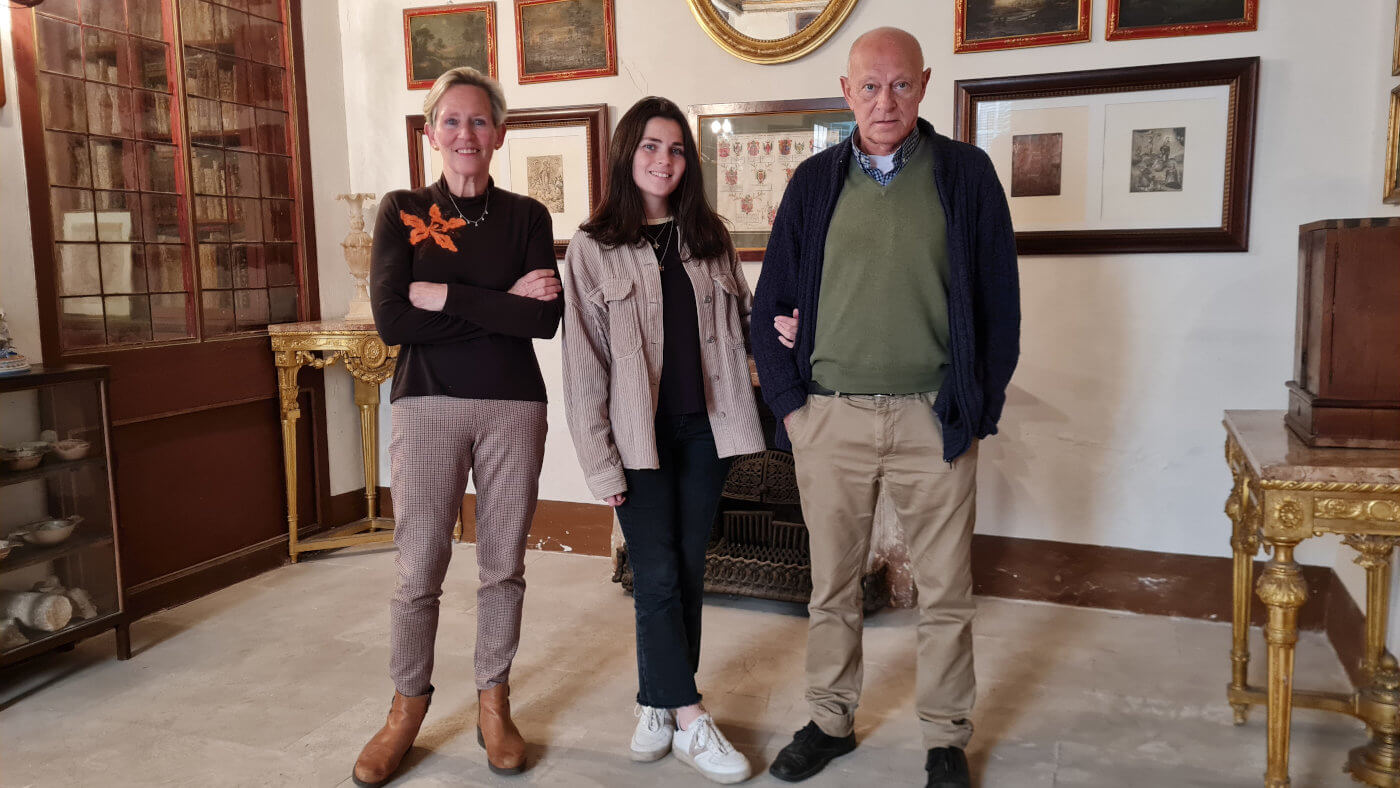
Magdalena de Quiroga, Sol and Pedro de Montaner. Photos: R. Beltrán
Doctor in Geography and History and Count of Zavellá, Pedro de Montaner was director of the Municipal Archives and Libraries of Palma. “I got the position by public examination, because everything must be said”, he jokes. His wife, Countess Magdalena de Quiroga, also has a degree in History. They and their daughter Sol live in Can Vivot, a witness to Ciutat’s stately past.
– Can Vivot is the maximum exponent of the stately homes of Palma. How has this heritage been preserved?
– PEDRO. For us the house means a lot. It is a hereditary legacy for which we have fought to save it from real estate projects. They call us constantly and offer us a blank check. Our generation has seen the loss of practically all of Palma’s large stately houses, which at the end of the 20th century were still representative with almost a hundred. In a short time, much has gone to waste and if you go for a walk, every day is a fright.
– MAGDALENA. People have preferred to sell, because it allows you to live much better than what we are doing. This is true heroism, not everyone is up for it. The comfortable thing is to sell.
– Lack of heirs, deaths, bankruptcies… Most stately homes in Palma have gone through bad times.
– P. There are cases that have been painful and have had to sell because they had no other option. Today there are practically only three left: Can Vivot, Can Moragues del Recó and Can Oleza, with an uncertain future. Also Can Pueyo, immersed in mystery. Casa Vivot must be preserved as a testimony of what civil architecture was in Mallorca because, otherwise, nothing will remain.
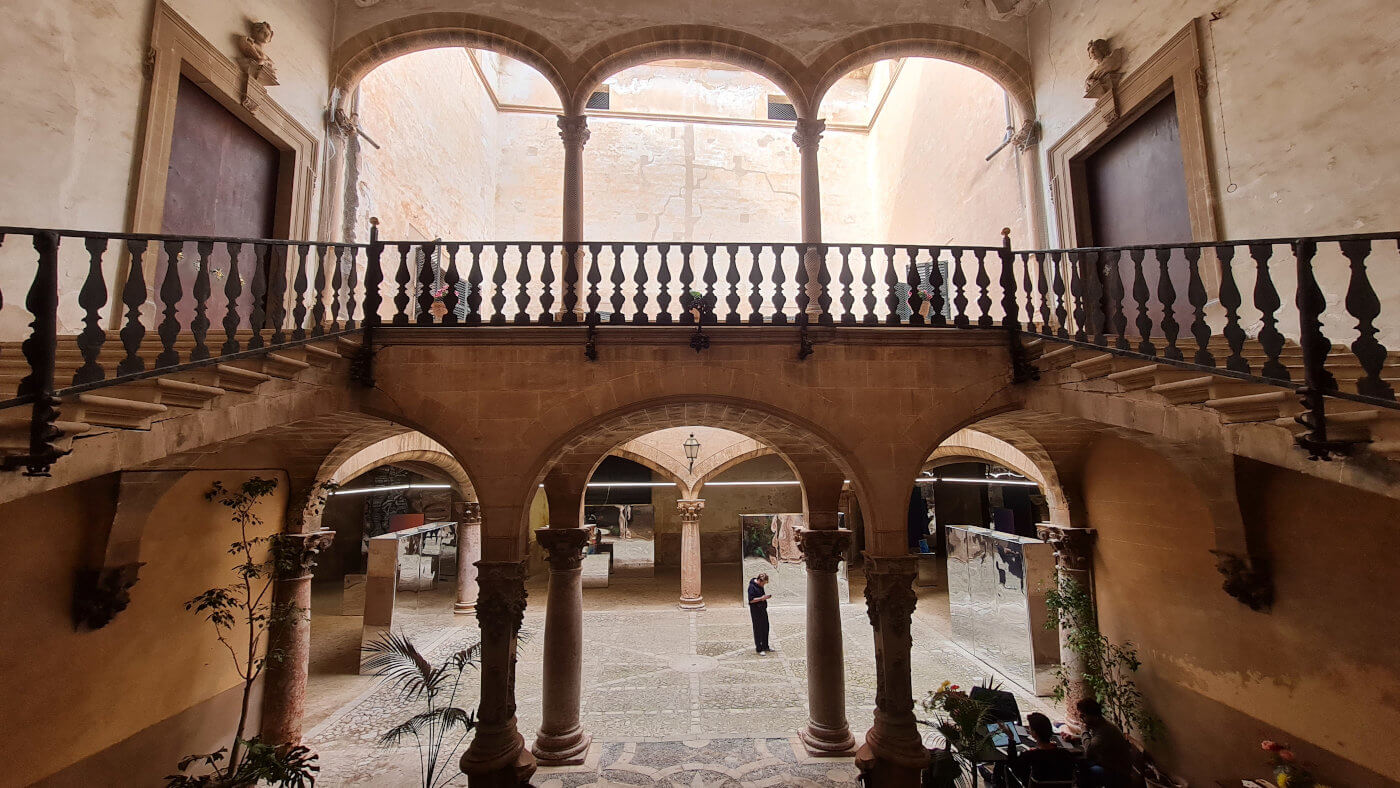
– Has Can Vivot gone through a critical moment?
– P. Yes, we were about to lose it in 2010 when an inheritance lawsuit began. There was a lot of pressure to build luxury apartments against the will of the testator, my father. He expressly said that he wanted it to be preserved just as he had received it from his parents.
-M. It was about to be lost. Now, after almost 16 years closed, there are many things to fix, rehabilitate… All the money that comes in goes to the house.
– Have we arrived late to protect Palma’s heritage?
– P. Yes, because when it’s gone, there’s no turning back. For example, in Palma, Can Solleric was sold with the furniture to the City Council and what they did was dismantle it to make a museum of contemporary art, as if there were no other places for it.
– M. The houses that the autonomous community or the City Council have bought have been lost. The fact they belong to the public administration is not a guarantee of absolutely anything.
– Do you keep documents from when the house was built?
– P. The house is well documented, it has a very rich archive. It is documented in the 14th century, with the façade on Zavellá Street and the Gothic warehouses on the ground floor. Also the furniture. Now we live in the part where the family has normally lived since the 19th century. It is the oldest but the most habitable.
– Is it possible to have a life adapted to the 21st century in a 15th century house?
– M. During winters it is really bad. If in a normal house you are already cold, in one of 5,000 square meters… imagine. They are neither adapted nor adaptable. You put on your coat to go to the rest of the rooms. Apart from that, in the warmer months it leads a very pleasant life.
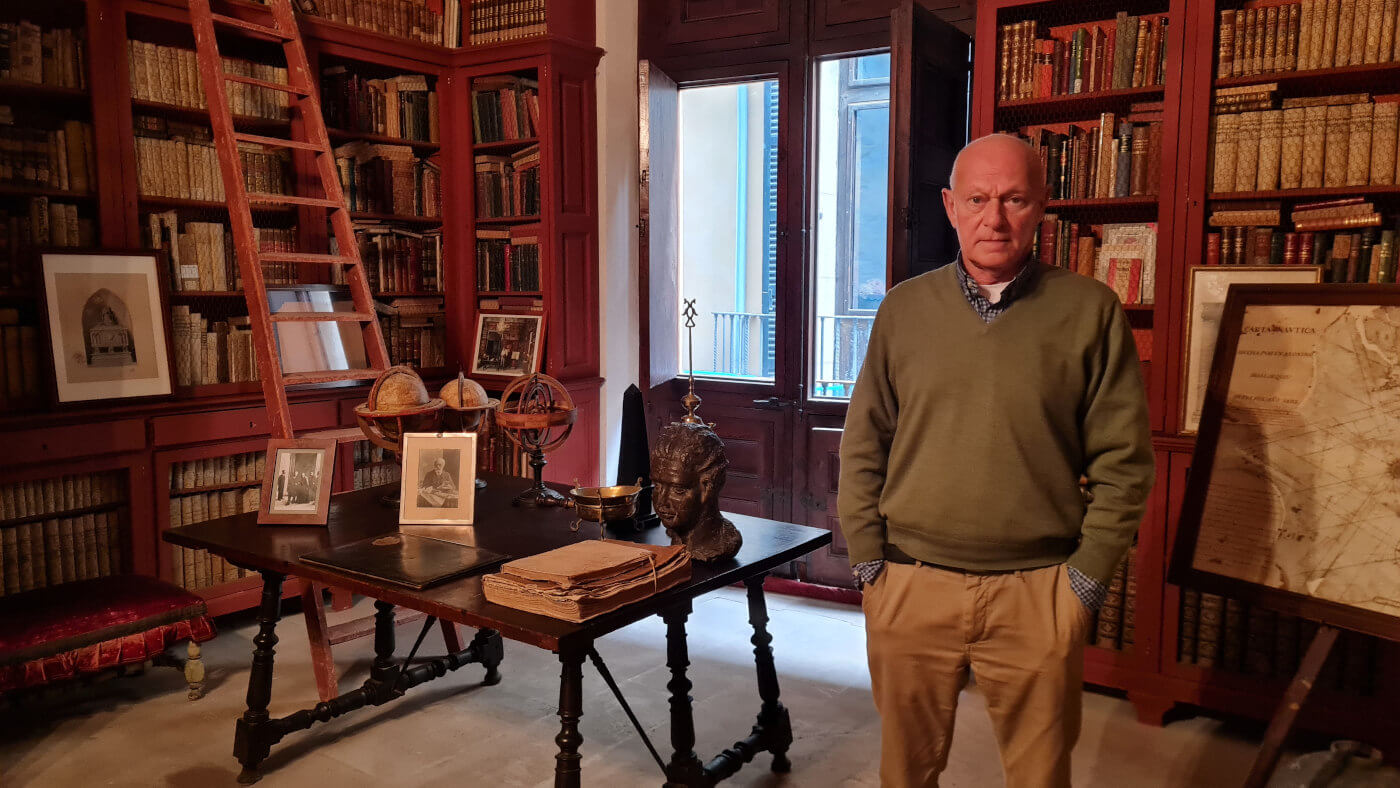
– Declarations as a National Historical Monument or BIC, what do they mean on a day-to-day basis?
– P. That you have to ask permission for everything, it is very complicated to do anything in the house. In Can Balaguer they covered the arches of the patio again. Have you seen a private patio where someone thinks of walling up an arch? This is the example given by the City Council, mistreating a large patio from the 18th century. When an administration buys, it can do with the property what it wants.
– M. The catalogs are not accompanied by any aid, only the IBI exemption, but in return they prohibit you from doing anything in your own home. Those who sold 20 years ago have made a fortune and those who have been caught by the protectionist era, it turns out that they can’t do anything but they don’t help you either. Then they are surprised that people sell, do illegal works…
– Currently, what are the relations between the nobility?
– P. As a legal entity, it was abolished in the Cortes of Cádiz. It is just a dignity. Everyone is aware that you have to adapt and live according to the times. But if you belong to the nobility there is a moral obligation to dignify your name, work as honestly and as well as possible. This is all.
– Do the Kings take you into account when they visit the island?
– P. -When they come in the summer and hold the reception, they invite the noble graduates, of whom there are five of us in Mallorca. There is no Court anymore, not even in the times of Juan Carlos. The important thing is to adapt to the new times, and woe to those who don’t integrate… The title is a mercy and you just have to try to give it continuity; I am the 17th Earl of my title.
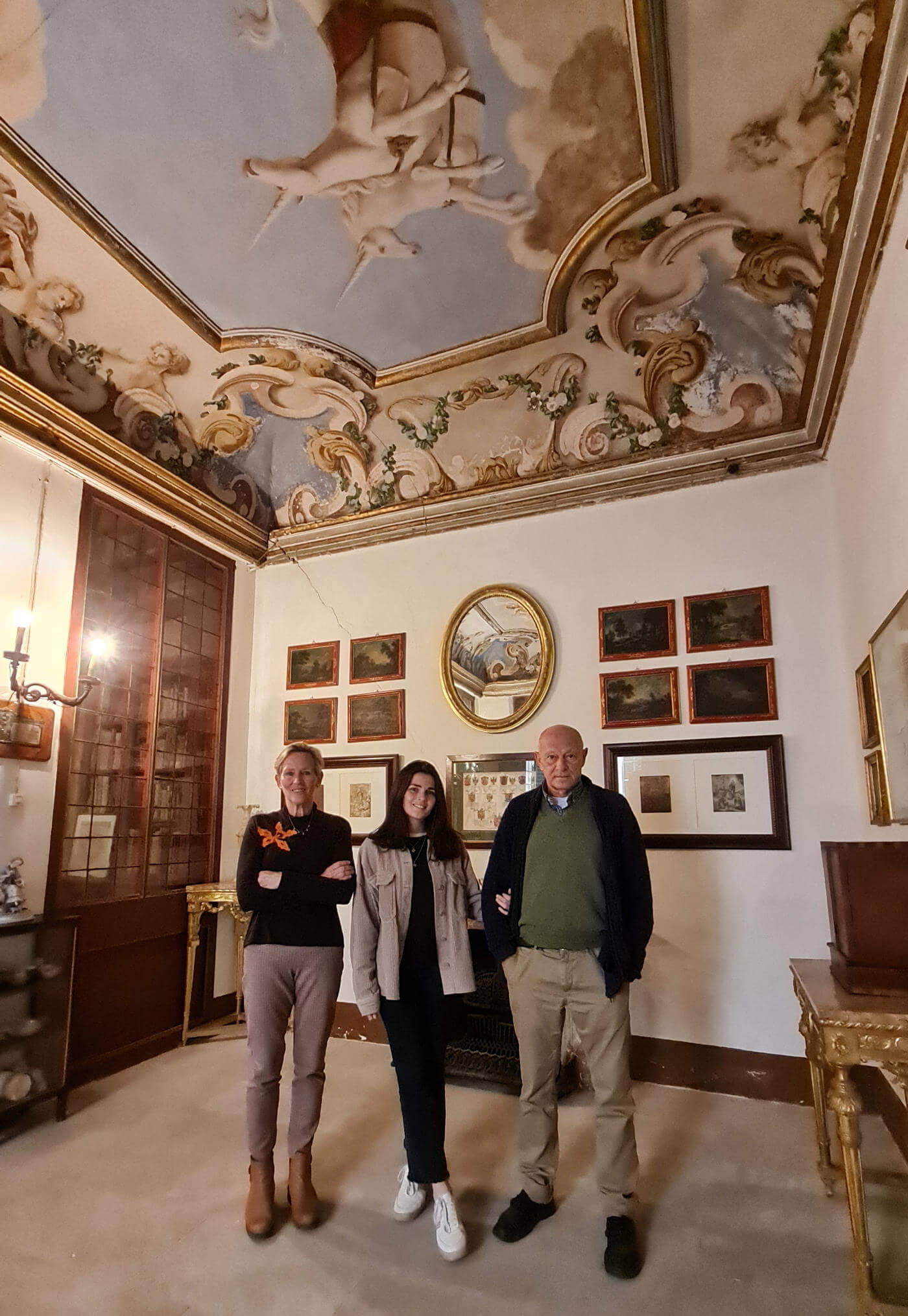
The future of Can Vivot
Pedro and Mayda’s daughter, Sol, has a degree in Humanities and a Master’s degree in Cultural Heritage Management. She embodies the future of Can Vivot. “We have started by opening the part of the house that most impresses to groups of 4-12 people with arranged visits”, she explains. However, “we want to open more rooms and for people to be able to go through it freely by purchasing their ticket in the courtyard”. A space, the patio, which they also rent to host temporary exhibitions and events. So far, visitors can discover seven rooms, a total of 1,200 m2. “They are all decorated and their ceilings have frescoes; In addition, they preserve original furniture from the time”, explains Sol. “The house is as it was, therein lies its interest, since the visitor can understand its operation and its historical evolution”, she concludes.
💡 Read the article: Stately homes in Palma: from nobility power to decadence.
💡 Aina Pascual: “Palma has arrived late in protecting its heritage”.



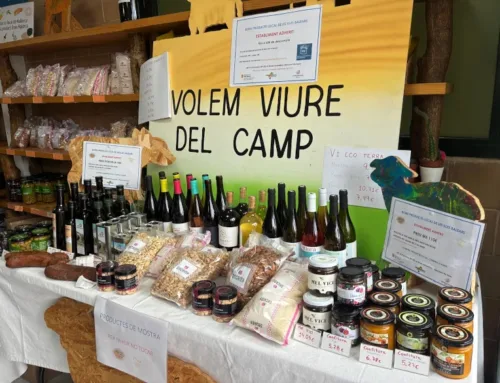


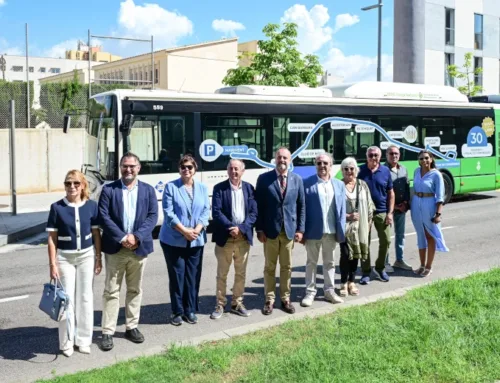

Leave A Comment